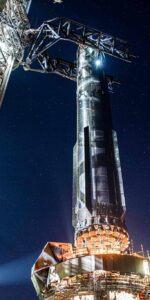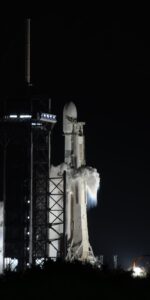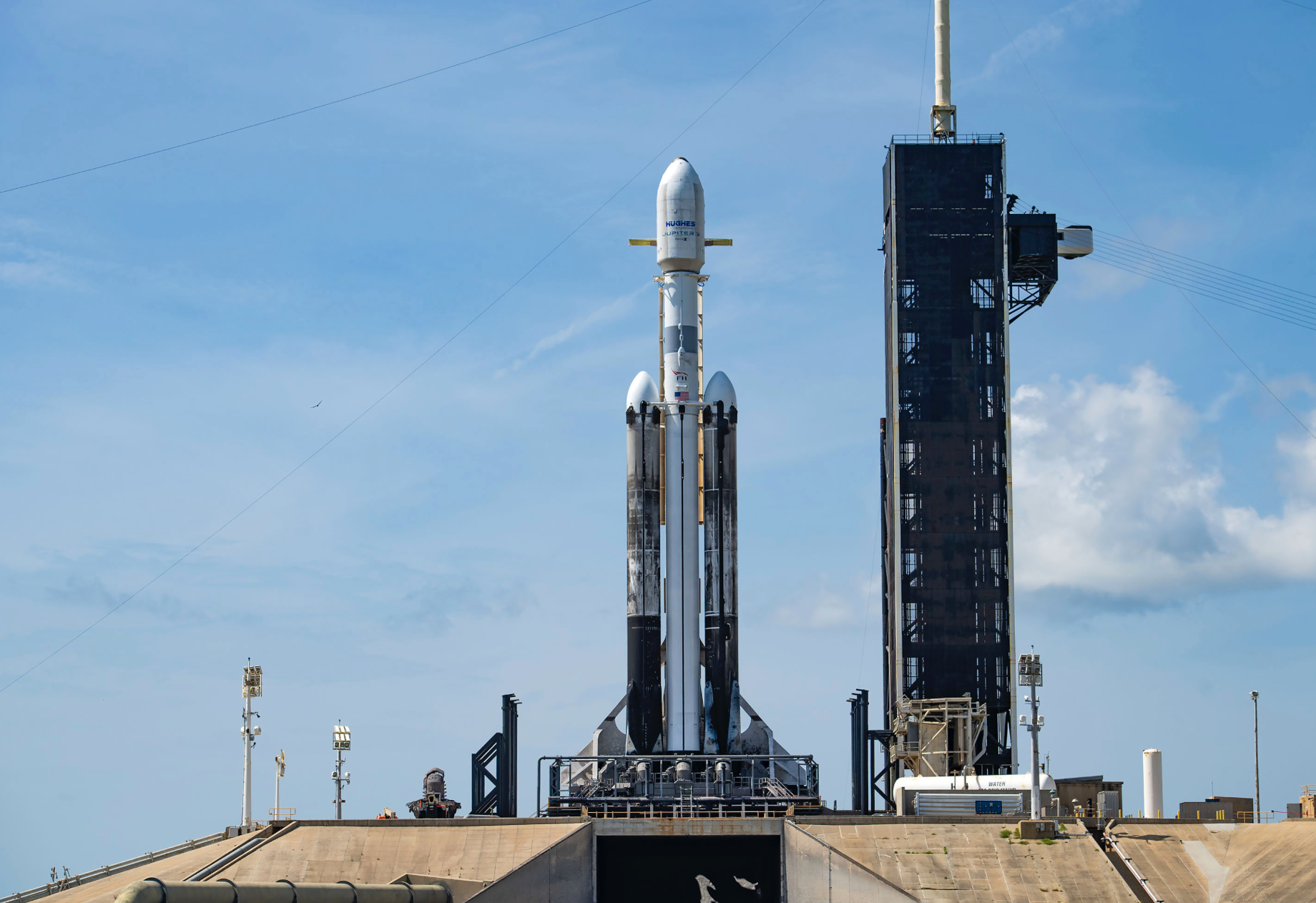
Florida’s intractable weather is trending at 85-percent-favorable for tonight’s just-before-midnight liftoff of the third Falcon Heavy mission of 2023 from historic Pad 39A at the Kennedy Space Center (KSC). A brand-new center core and two flight-proven side-boosters are aiming to power uphill with a geostationary communications satellite for EchoStar, Corp., on SpaceX’s 50th Falcon-class launch of the year, as a “single-stick” Falcon 9 waits in the wings to fly from neighboring Space Launch Complex (SLC)-40 at Cape Canaveral Space Force Station, less than 24 hours later on Thursday evening.
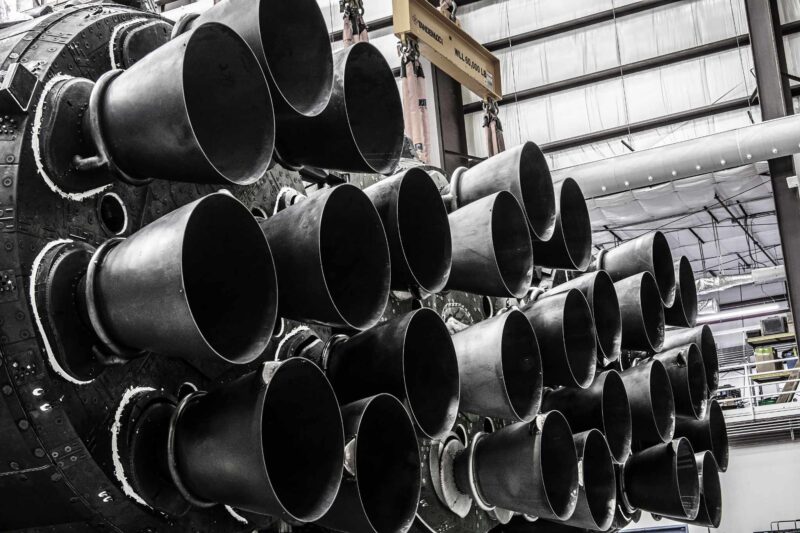
Late last week, SpaceX shared images of the mighty Falcon Heavy being readied in the horizontal integration facility near Launch Complex 39. The giant rocket’s center core, designated B1079, will be embarking on her maiden (and only) mission, the demands of her principal payload—the 20,000-pound (9,200-kilogram) Jupiter-3 Ultra-High-Density Satellite (UHDS)—dictating that she be fully expended on this flight.
However, the B1064 and B1065 side-boosters will both be making their third treks to the edge of space, having served in the same capacity on two prior Heavy missions—last November’s USSF-44 and more recently USSF-67 in January, both of which lofted classified payloads on behalf of the U.S. Space Force—and both again targeted to return to synchronized touchdowns on Landing Zones (LZ)-1 and 2 at the Cape. Tonight’s flight will make 2023 the first year that as many as three Falcon Heavies have flown, with B1064 and B1065 expected to pull additional duties later this year as side-boosters for two more, including an ambitious mission to investigate the metal-rich asteroid, Psyche.
Aboard the triple-barreled Falcon Heavy is the Jupiter-3 geostationary communications satellite, flying for Inverness, Colo.-headquartered EchoStar, Corp. Built by Maxar and set to be redesignated EchoStar-24 when in orbit, it will showcase miniaturized electronics, solid-state amplifiers and a high-efficiency antenna architecture for “more concentrated capacity over high-use areas”.
The satellite, whose high-efficiency Ka-band antennas will enable data-throughput rates of up to 500 gigabits per second, departed Maxar’s facility in Palo Alto, Calif., late last month and arrived at the Cape on the final day of June. Yesterday, teams at Pad 39A completed a Launch Readiness Review (LRR) for the mission, targeting a T-0 during a 99-minute “window” which opens at 11:04 p.m. EDT Wednesday.
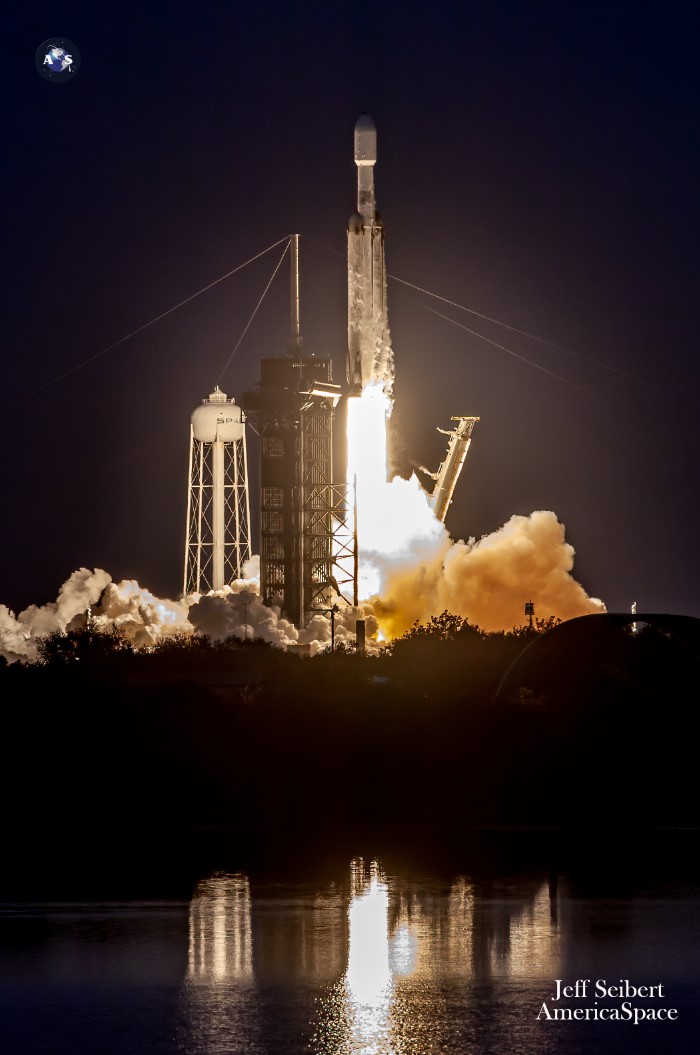
An on-time liftoff will tonight see the Heavy power off the pad under a combined 5.1 million pounds (2.3 million kilograms) of thrust from its 27 Merlin 1D+ engines. The twin side-boosters will cut off about two minutes and 22 seconds into the flight and separate from the stack, pirouetting homeward under the guidance of their hypersonic “grid-fins” and pairs of engine “burns”.
The pair will first conduct synchronized “Entry Burns” at 6.5 minutes after liftoff to gradually reduce their incoming velocities, followed by synchronized “Landing Burns” at seven minutes and 20 seconds, seconds ahead of touchdown. B1064 and B1065 will alight in unison at adjacent LZ-1 and LZ-2 at seven minutes and 34 minutes after launch.
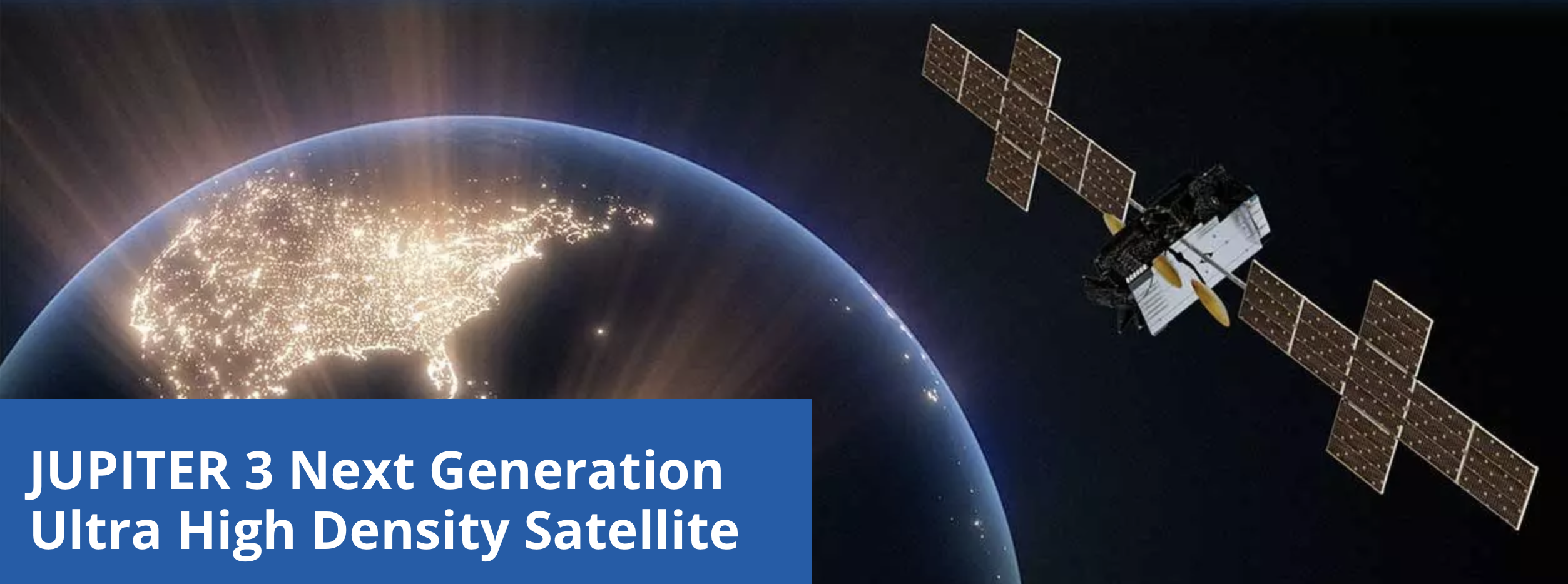
With B1079 having been discarded at just shy of four minutes into the flight, the Merlin 1D+ Vacuum engine of the Falcon Heavy’s second stage will ignite for no less than three burns—the first lasting a standard six minutes, the second about 90 seconds and the third a little under a half-minute—over a period of more than three and a half hours. These will pre-position the Jupiter-3 satellite for deployment at three hours and 28 minutes into tonight’s mission, around 2:30 a.m. EDT if launch occurs on time.
And launch weather personnel are closely watching Mother Nature, who is pledging an 85-percent likelihood of acceptable conditions tonight, with a marked deterioration to only 40-percent-favorable should SpaceX scrub and realign for Thursday night. “Afternoon showers and storms will shift well inland by the late afternoon and evening,” noted the 45th Weather Squadron at Patrick Space Force Base in its Wednesday morning update, “and any lingering activity will begin to die off after sunset.
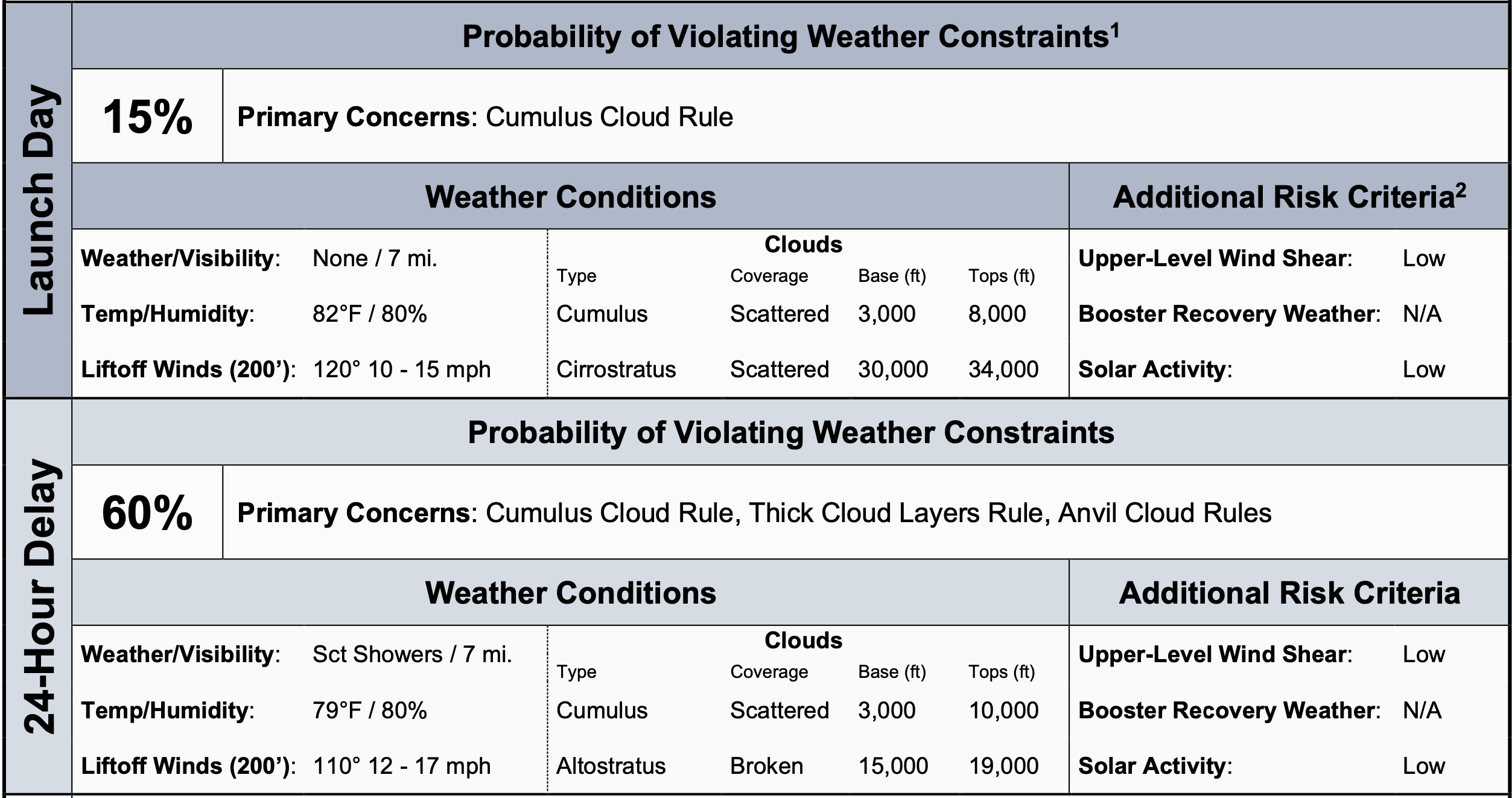
“The only concern will be associated with coastal showers that are able to develop from the onshore flow,” it added, highlighting potential violations of the Cumulus Cloud Rule as the primary weather issue being watched. However, as a weak tropical wave brings increased moisture and coastal shower coverage on Thursday, tomorrow night’s picture looks decidedly more complex, with a higher Probability of Violation (PoV), due to cumulus clouds, thick cloud layers and anvils.
That may also complicate the picture for a single-stick Falcon 9, waiting in the wings for liftoff from the Cape’s SLC-40, no earlier than 10:20 p.m. EDT Thursday. Flying this mission is B1062—one of SpaceX’s fleet-leaders, getting ready for her 15th mission and her fourth outing in 2023 alone—and her payload includes 22 Starlink internet communications satellites, destined for emplacement into low-Earth orbit about 65 minutes after launch.
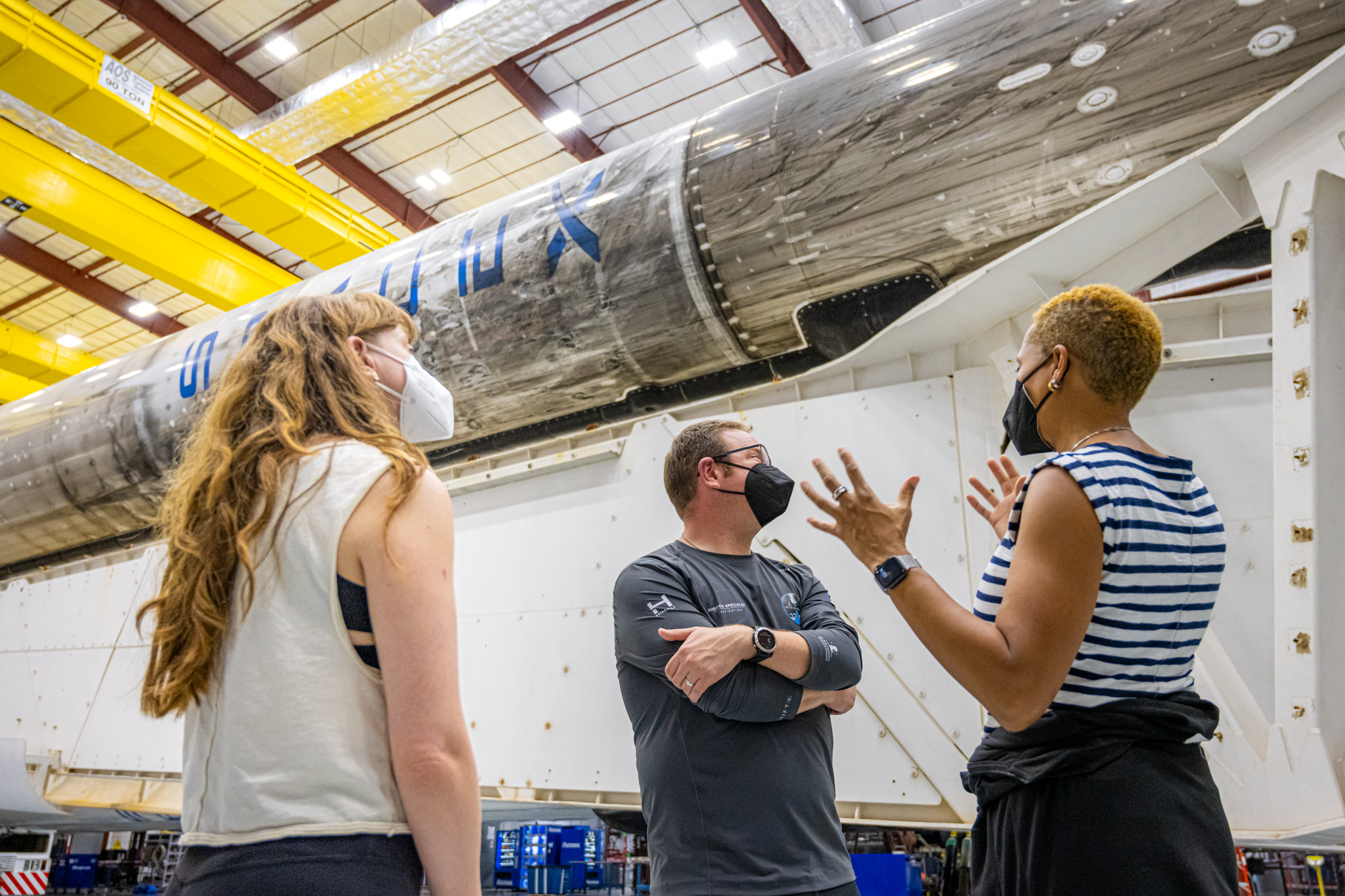
Three T-0 points exist for B1062 tomorrow night: if the 10:20 p.m. opportunity is missed, teams may aim for 11:10 p.m. or 12:01 a.m. Friday, with a further four chances to fly late Friday and extending into the opening minutes of Saturday morning. With scattered showers and isolated thunderstorms creating a 40-percent-favorable picture for Thursday night, conditions are expected to brighten to 65-percent-favorable late Friday, as the Atlantic ridge retreats eastwards and storms begin to move inland.
With the Falcon Heavy core to be expended, and her side-boosters aiming for “land” landings, B1062 is targeting an oceanic touchdown. The Autonomous Spaceport Drone Ship (ASDS), “A Shortfall of Gravitas”—which has recovered 14 Falcon 9 cores so far this year alone—put to sea out of Port Canaveral on Sunday, only days after supporting the landing of the record-tying 16-times-used B1060 core.
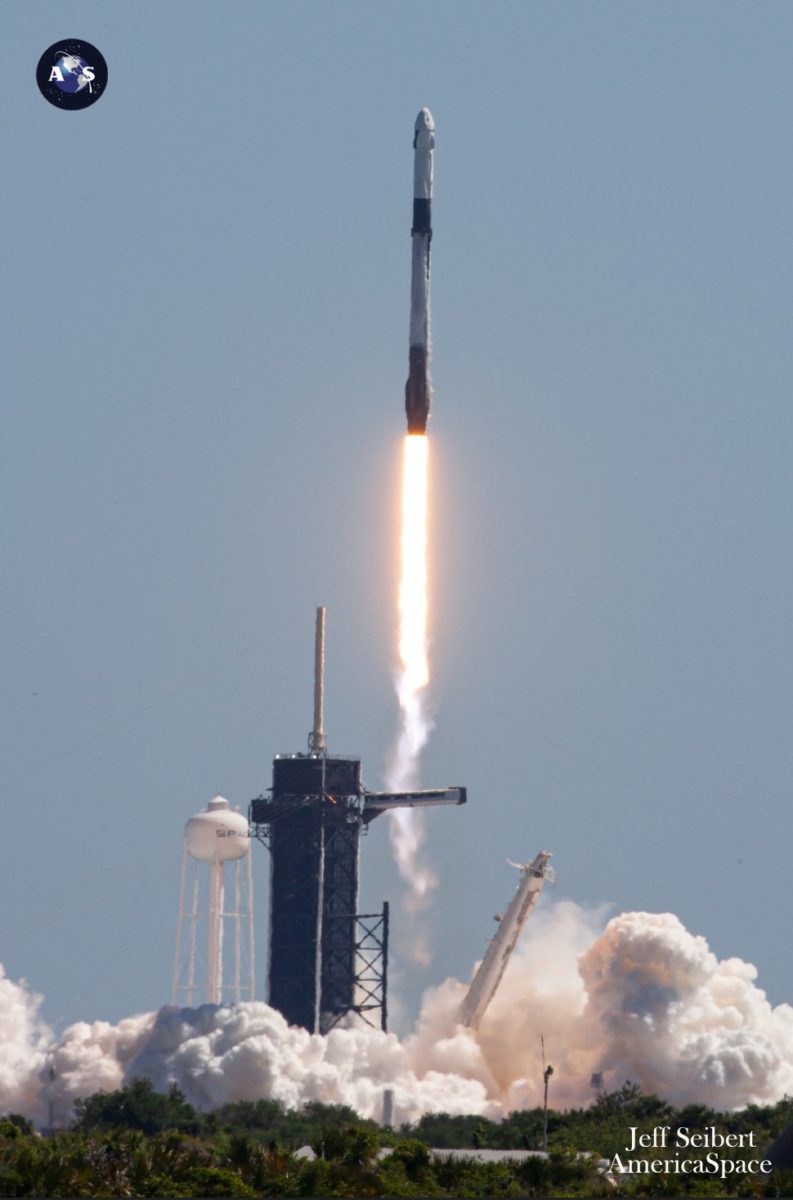
Whichever of these two upcoming missions goes first will mark the 50th Falcon-class flight of 2023, counting both single-stick Falcon 9s and triple-barreled Heavies. And SpaceX will break through the hallowed 50-flight barrier in the year’s 30th week, which equates to a launch every 4.2 days, a substantial uptick over last year’s personal-best-beating achievement of 5.9 days. Putting that into context, it took SpaceX until early November in 2022 to reach 50 launches; and in 2021, the Hawthorne, Calif.-based organization achieved “only” 31 flights across an entire calendar year.
Twenty-seven flights have lifted 1,200 flat-packed Starlinks uphill, including seven batches of downsized “V2 Mini” satellites, which boast three to four times greater “usable” bandwidth than their earlier iterations. Eight geostationary missions delivered eight powerful communications satellites and a highly classified payload for the U.S. Space Force.
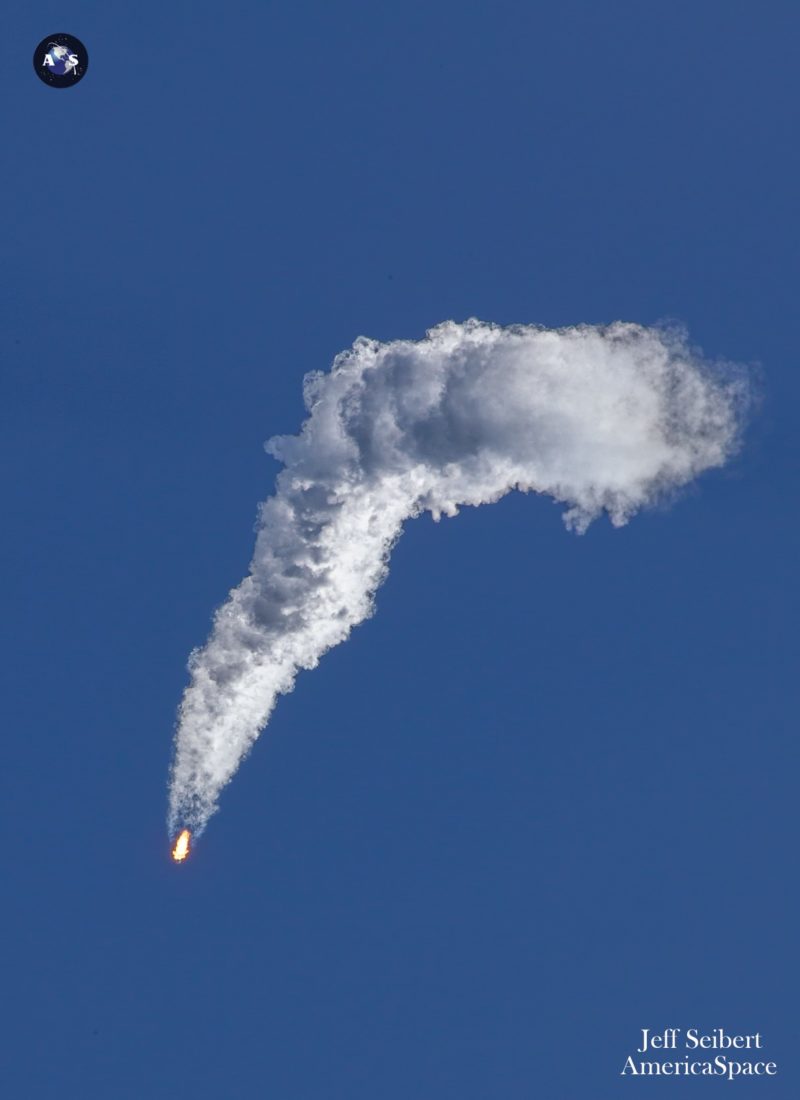
Two uncrewed cargo missions in March and June flew to the International Space Station (ISS), as did a pair of crewed flights, including Ax-2, the first all-private orbital mission commanded by a woman. Other accolades achieved this year included the first booster cores to log a 16th launch, the shortest interval ever achieved—just four hours—between pairs of missions and a record-setting cadence of Falcon 9 flights out of Vandenberg Space Force Base, Calif.




